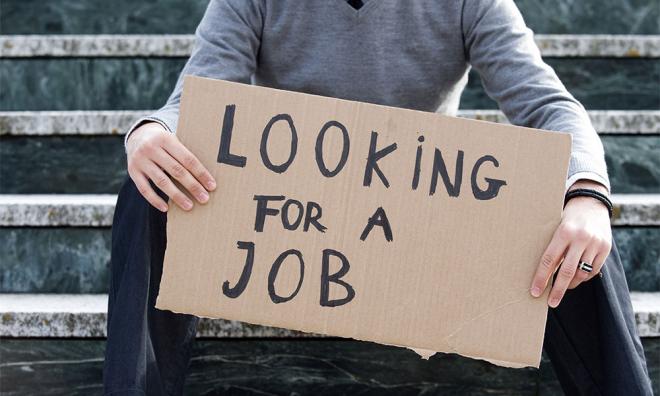
As the Covid-19 outbreak begins to ease in Malaysia, a new problem is emerging in the rise of unemployment.
According to the Department of Statistics Malaysia (DOSM), the number of employed people was at an all-time high of 15.3 million in February.
That figure had shrunk by 2.8 percent in just two months with about 411,100 fewer people employed during the labour force survey for April.
Effectively, the number of employed people has been rolled back by one year to levels not seen since January 2019.
Yesterday, the DOSM revealed that the unemployment rate - the number of jobless people actively looking for paid work divided by the number of people in the labour force - for April had hit five percent.
For context, Malaysia has not seen a five percent unemployment rate since 1990, and the average unemployment rate between 2010 and 2019 was 3.2 percent.
In economics, unemployment is very undesirable because it causes an erosion of a country's economic output, leads to lower purchasing power as well as a rise in crime and social problems, among others.
According to experts consulted by Malaysiakini, the worst is yet to come.
For instance, economist Lee Hwok Aun said although the economy is reopening, many businesses cannot operate at full capacity due to regulations, depressed demand or both.
Moreover, Lee pointed out that unemployment figures do not account for people who may have withdrawn from the labour force due to the current conditions.
Indeed, the DOSM noted that the inactive unemployed increased 102.2 percent year-on-year to about 319,000 persons in April as this category of people believed there were no jobs available for them.
While Lee could not offer a forecast of the unemployment rate due to data gaps, Malaysian Institute of Economic Research (MIER) executive director Zakariah Abdul Rashid predicted that Malaysia would see 1.7 million unemployed people by year-end, or approximately an unemployment rate of 11 percent.
If Zakariah is correct, unemployment will reach levels never seen in four decades of proper record keeping.
AmBank Group Research chief economist and head of research Anthony Dass had expected an unemployment rate of at least six percent by year-end, noting that an estimated 500,000 people are expected to join the labour market this year.

More wage subsidies needed
The government has been touting the success of its wage subsidy programme in saving "2.4 million" jobs, despite businesses ranging from hotels to entertainment shuttering up for good in recent weeks.
Lee said although wage subsidies, cost reduction policies and loan moratoriums offer some measure of support for businesses, the uptake can be slow due to bureaucracy.
"The rather slow take-up rate, especially of the wage subsidy, suggests that the amount of support and conditions attached to receiving the subsidy may be unattractive for many businesses.
"Over time, companies not claiming subsidies, operating below capacity and dwindling in their reserves will struggle to retain workers or even to remain in business," said the ISEAS-Yusof Ishak Institute senior fellow.
The wage subsidy scheme, which accounted for a large chunk of the RM35 billion direct fiscal injection, could have better effects had it been higher, said Lee.
"A more generous quantum of subsidisation - say, 75 percent to 85 percent of wages, instead of the fixed RM600 or RM1,200 - might have mitigated more job loss," he said.
For the second phase of the wage subsidy scheme, employers can seek a subsidy of RM600 per worker from July until September.
Only workers earning below RM4,000 will qualify, and the number of subsidy recipients per company is capped at 200.
For a person earning a median wage of RM2,308 a month, the subsidy amounted to 26 percent.
Comparatively, Singapore will subsidise 75 percent of wages for all local employees for 10 months from February until August.
The UK is subsidising wages of up to 80 percent, capped at £2,500 (RM13,494) a month, from March until October.
Prepare for change
Asked for advice for workers facing the coming months and years, Lee said workers should demand sustained, adequate and effective job and wage protection.
"Young workers and new labour market entrants should especially look for new sectors being supported or industries being reconfigured with new technology and shift to online operations.

"The government needs to more effectively incorporate workers' representation in policymaking and when forming task forces and committees to address the ongoing challenges and insecurities," he said.
Lee said crises had triggered transformations in the past, particularly after the aftermath of the Great Depression in the 1930s.
The broadly shared view among economists, he said, was that economies need to change the way things operate to become more nimble and resilient, while also enhancing the security of employment and income.
"In the medium and long term, countries will need to undergo phases of experimentation, self-discovery and learning by doing," he said.
He hoped that discussions on short-term policymaking would make public health and social protection top priorities, as well as protecting jobs and helping businesses adapt, with special attention to low-income earners.
Other areas which needed policy consideration include skill acquisition for new and returning labour market entrants and investments in new technology. - Mkini



No comments:
Post a Comment
Note: Only a member of this blog may post a comment.